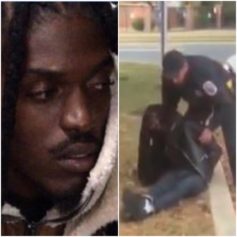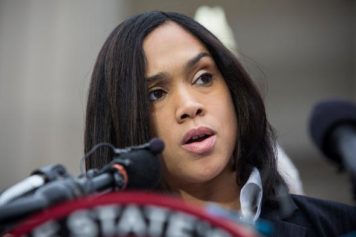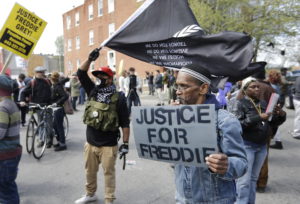
The majority of Black citizen’s discontentment with the media’s coverage of people of color is probably one of the least surprising facts presented by a survey conducted by the Huffington Post and YouGov.
Nearly 45 percent of the Black participants felt the media tended to be biased against minorities while only 12 percent said the media has been fair in their representation of people of color.
Those frustrations caused the hashtag #IfTheyGunnedMeDown to take over Twitter and top the trending topics list, as users of all colors uploaded two images of themselves side-by-side—one that featured them giving the appearance of a model citizen while the other was snapped on a drunken night or in a scantily clad outfit or highlighted questionable hand gestures.
For Black users, they focused on the fact that the media would use the image of them that supported accusations of them being “thugs” or “dangerous.”
White users insisted that the media would use their “model citizen” image even though they had the same types of drunken, disconcerting photos as their Black counterparts. It is important to note, however, that despite some white citizen’s involvement in the social media trend more than 50 percent of white participants said the media tends to be biased “in favor of racial minorities.”
The trend was inspired by the deaths of unarmed Black men like Trayvon Martin and Michael Brown who were both represented in mainstream media with troubling images.
Overall, the Huffington Post/YouGov survey only proved how wide the racial and political divide is when it comes to matters of police brutality and how the media covers it.
While the vast majority of Black people felt Freddie Gray’s death received the proper amount of coverage, an overwhelming amount of white survey participants insisted that Gray’s death was given entirely too much attention.
That divide is even more extreme when it comes to all matters of police misconduct.
More than 60 percent of white survey participants said too much attention is given to stories about police misconduct while more than 40 percent of Black participants said not enough attention was being given to such stories.
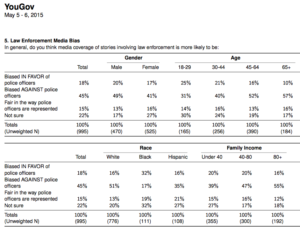
These are the types of numbers that prove America’s racial divide and troubled race relations cannot be repaired through policies or legislation. It’s a matter of completely different perceptions coming from two groups of people that live in two different Americas.
As for the divide between political lines, the rift between republicans and democrats wasn’t as significant.
While republicans clearly dwelled on the end of the spectrum that supported police officers in all of the survey questions, democrats tended to be spread out all over the board.
Roughly 75 percent of republican participants said the media tends to be “biased in favor of minorities,” while 25 percent of democratic candidates felt the same way.
About 34 percent of democrats felt the media was “biased against racial minorities” and 16 percent feel the media tends to be fair.
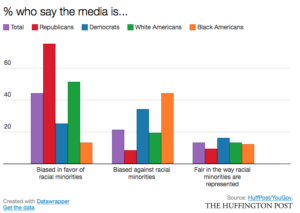
Another interesting set of findings revealed that more Black participants consumed their media coverage of Freddie Gray’s death through mainstream media like television shows or radio channels. The majority of white participants, however, followed the story through digital means.
This, in addition to the obvious rift in race relations, could also contribute to some of the varying opinions of the media’s coverage.
Throughout the unrest in Baltimore and other cases of police brutality, digital media has been far more likely to provide new updates of the coverage several times throughout the day. But TV broadcasts and radio channels seemed to provide a lump sum of updates at one time and merely repeat that information later in the day.
Also, the way digital publications often offer drastically different angles of the same story while TV and radio all tend to follow the same “blueprint” for the story, could easily cause Black consumers to be frustrated with the lack of discussion about the greater issues at hand. Those are the types of conversations that rarely make their way to mainstream media sources.
What’s unfortunate is that the trend seems to support the existence of consumer fatigue when it comes to repeated coverage of the same topic, rather than a growth in the concern for an oppressed population, even as more information about their plights and challenges make their way to an international platform.

